Coming Soon: A Universal Recycling Label System
by: fast company, 2011-06-07 22:01:09 UTC
How do you know if a package you buy will be recycled? That hasn't been easy--until now.
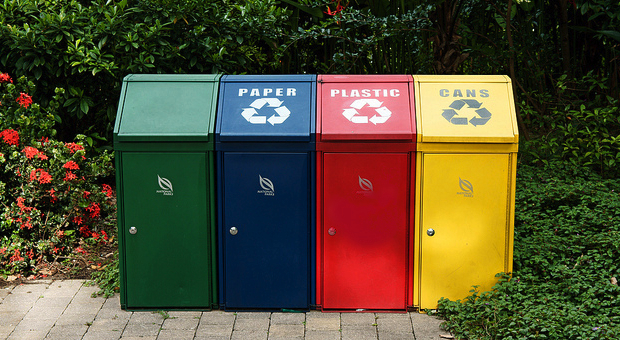
How do you know if a package you buy will be recycled? More often than not, there's no easy way to tell. The inscrutable number codes on the bottom of plastic packages only describe the type of plastic it contains, not whether that plastic is recyclable. And just because a package trumpets a label saying "100% recyclable" or comes emblazoned with the chasing arrows logo, it's no guarantee that it actually can or will be recycled. Grocery store shelves are littered with misleadingly labeled products, much to the frustration of both shoppers and companies that are committed to recycling.
With that in mind, a business group devoted to recycable packaging is launching a label system it hopes will clear up the confusion. The new system is the brainchild of the Sustainable Packaging Coalition (SPC), a working group of more than 200 companies that includes some of the country’s biggest manufacturers and retailers--including Microsoft, FedEx, and McDonald's. The SPC system classifies four types of packaging:
• Widely recycled: packaging materials such as glass, cardboard, PET plastic bottles which are recycled in most communities.• Limited recycling: materials that are only recycled in 20 to 60% of the U.S., such as polypropylene yogurt containers.• Not recycled: materials that are rarely recycled, such as Styrofoam.• Store drop-off: category for the bags and plastic film that are often collected by grocery stores for recycling.
 The labels are not mutually exclusive; a single product might sport several, depending on its packaging. For instance, a box of cereal may carry both a "widely recycled" label, for the cardboard box, and a "limited recycling" label, referring to the plastic bag inside.
The labels are not mutually exclusive; a single product might sport several, depending on its packaging. For instance, a box of cereal may carry both a "widely recycled" label, for the cardboard box, and a "limited recycling" label, referring to the plastic bag inside.
"The idea is that each component that is easily separable by the consumer is labeled separately," said Anne Bedarf, the SPC project manager who helped develop the system. The labels, which were in development for more than three years, are based on ones that are widely used in Britain. Bedarf said it was difficult to determine if the labeling system had boosted recycling rates there. "But I can say it has increased consumer awareness of recycling."
Meanwhile, a parallel effort is underway to revamp the resin code used for plastic recycling: those squint-to-read numbers stamped onto plastic containers. Critics say the code is outdated because it doesn’t take account of bio-plastics or the great variety of polymers now pigeonholed simply as #7’s (AKA "other plastics"). The standards-setting group, the American Society for Testing and Materials, is wrestling with that issue and isn’t expected to come out with a new code for a few years.
Some member companies of the SPC will start testing the new labels this fall, as part of a pilot project extending through 2012. After that, the group plans to make them more widely available. "Our hope is for it to become a universal label," Bedarf said.
[Top image: modified from Flickr user epSos.de]
Susan Freinkel is the author of Plastic: A Toxic Love Story and American Chestnut: The Life, Death and Rebirth of a Perfect Tree.
A San Francisco writer, her work has appeared in Discover, Smithsonian,
the New York Times, Reader's Digest and other national publications.


 N12 3D-printed bikini by Continuum Fashion and Shapeways
N12 3D-printed bikini by Continuum Fashion and Shapeways
by: Dezeen, 2011-06-07 13:33:31 UTC

The world’s first 3D-printed bikini has gone on sale, created by designers Jenna Fizel and Mary Haung of Continuum Fashion. (more…)


 Dezeen Screen: interview with Yves Bahar on Sayl chair
Dezeen Screen: interview with Yves Bahar on Sayl chair
by: Dezeen, 2011-06-07 09:42:26 UTC
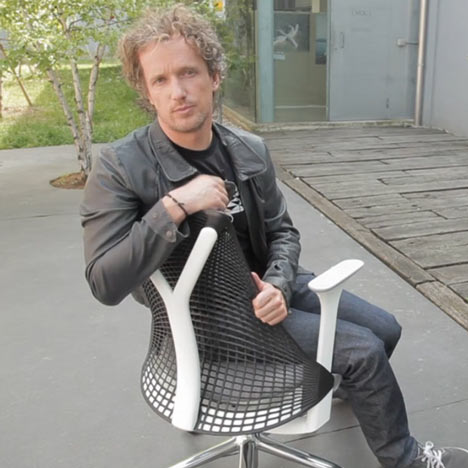
In this movie filmed by Dezeen at Ventura Lambrate in Milan, San Francisco designer Yves Behar talks about Sayl, an office chair inspired by suspension bridges that he designed for furniture brand Herman Miller. Watch the movie »


 Mitsubishi's advanced i-MiEV to supply emergency power to homes
Mitsubishi's advanced i-MiEV to supply emergency power to homes
by: Ecofriend, 2011-06-07 10:11:36 UTC
Dattatreya:

Mitsubishi i-MiEVPower your home with your EV
A few days ago we talked about how UK police would use the all-electric Mitsubishi i-MiEV for their non-emergency patrolling. But it seems this bantam hatchback has yet another mode of utilization, and this time I daresay it is more practical and conscientious. In the aftermath of the natural calamity that had struck Japan, there have been bouts of unavailability of electricity. In a bid to somewhat rectify the situation, Mitsubishi is all set to introduce their unique device, which allows i-MiEV owners to power their home electrical appliances using their electric vehicle’s battery.The commercial unveiling of such a device was always on the cards, but in view of the recent catastrophe faced by Japan, the company is releasing the product a year earlier than initially planned. According to Mitsubishi, the 16 kilowatt-hour battery pack can supply uninterrupted power to an average Japanese household for almost one and a half days. The device will incorporate a 100-volt AC outlet capable of delivering up to 15 amps, which would be more than enough to power relatively large appliances, such as washing machines.
But it should be duly noted that this contraption is specifically devised to be used in case of emergencies (when there is non-availability of electricity for long periods from the conventional grid). But surely, who can deny the novelty of acquiring clean, green and precious electricity during such adverse phases, and that too from one’s very own electric vehicle?
Via: AutoBlog


 10 most innovative energy saving systems
10 most innovative energy saving systems
by: Ecofriend, 2011-06-07 11:31:24 UTC
Perfectcontent83:

proxim self-powered energy saverproxim self-powered, energy saver
Energy saving is the need of the hour for all. A little precaution and a few smart electrical gadgets can work wonders in helping you save energy. Innovative, automatic energy saving devices have proved their receptivity and ability of energy saving. There are devices that do not only check the energy consumed, but also take necessary energy saving action when required. These energy saving devices should be used more often and should be replaced by all such machines that do not rank high on energy efficiency quotient. Here we have listed some of the devices that could save energy for future use:
1. Intelligent monitoring and action taking power saving devices

energy saving deviceenergy saving device.energy saving device for home
Designed by a Portugal based designer Pedro Rodrigues, the energy saving device (pictured above) keeps a check on the standby mode of the electrical gadgets and disconnect the power automatically when the appliance is not in use. This design won him the Premier Farnells Global Live EDGE competition.
2. Elegant and efficient energy saving device

smart energy saving-devicesmart,energy-saving-device,
Consumption Feedback Switch is a smart appliance that shows how much power has been used and how efficiently. Also, it lets one know how much power has been wasted. Surely once you know the amount of power wastage daily, you might end up using your devices more efficiently.
3. Discover power saving with Energenie

energenie power proenergenie, power pro
Energenie can help you in saving power in your daily lives. There are appliances in the market that not only promise you energy efficiency, but also save it for you. The appliance checks the standby mode of the appliance and automatically disconnects the power to that appliance. It does save a lot of power for you as soon as the appliance goes on a standby mode.
4. Power cord reveals power consumption

power cordpower cord,power cord energy efficient
Anton Gustafsson and Magnus Gyllensward have together invented a power saving device. This power cord lights up when the electrical appliance is in use. The more is the power consumed, the brighter is the light of the cord. This device can be very helpful in keeping a check on the power consumption of your appliances.
5. Glowing Socket keeps tab on power consumption

glowing socketglowing socket, socket
Shane Ellis and Terry Brown have invented a very useful device called the Glowing Socket. This device has a hidden LED that glows when the power is switched off. It can be of great help and a reminder for you to plug your device. All of us know that just switching off the device is not enough to save energy.�
6. AlertMes smart plug

alertmes smart plugalertmes, smart plug
You can attach this smart plug to a particular outlet in your home. It gives you the detailed data of the energy that has been consumed by the devices. All you need to do is plug this device to one of the outlets to help you to monitor the devices and the energy consumed by them. This is a handy system that can be accessed by you, on the internet, on a system and even from your cell phones. This device helps you switch on and off your devices with a remote control even when you are not around those appliances.
7. Proxim self powered energy saver

proxim self-powered energy saverproxim self-powered, energy saver
Designer Paul Scarfe has designed an appliance called Proxim that has a micro generator in the form of an oscillating weight that converts the energy of motion into electricity for your appliances. The device generates energy and does not depend on battery or other sources of energy.
8. Trickle Star’s energy saver

tricklestartricklestar. energy saver device
Trickle Stars has come up with a new energy saving device that�connects to the computer via a USB port and enables one to save 12 percent of energy. This device keeps a tab on the total power consumed by the system in real time. This device cuts the power supply to the appliance once the system is put on the standby mode.
9.� Sticord user-friendly plug concept

sticord plugsticord plug, energy saver plug
Designed by Dongyeon Kim, the concept plug allows user to save energy in an efficient way. This plug lits with a yellow light when the plug is connected to a device that does not need electricity. The plug indicates a blue light when it is connected to a device that is in use.
10. Device that can automatically cut off power when you are away: E-pick

e-pick switche-pick,electricitysaving-switch
The E-pick device (pictured above) has sensors attached to it that sense the movement in the room and switch on and off lights accordingly. Besides low-tech devices that disconnect the power of the appliances when you are not at home, these E-pick sensor devices can be more effective in saving energy for you. This device can switch off the lights and appliances automatically in a vacant room.


 IBM Offers Cash-Strapped Mayors A Smarter City-In-A-Box
IBM Offers Cash-Strapped Mayors A Smarter City-In-A-Box
by: fast company, 2011-06-06 15:08:05 UTC
A plug-and-play system for cities that want the benefits of real-time data crunching, without the big bills required to become a true city of the future.

For the last two-and-a-half years, IBM has aggressively pursued its Smarter Planet strategy, producing more than 2,000 consulting engagements in cities around the world that want to improve their performance by tapping the data their citizens generate--including a public safety control center for the NYPD, water management for Dubuque, Iowa, and a weather prediction and emergency response system for Rio de Janeiro. Now the company will use those lessons to offer a smarter city-in-a-box to cash-strapped municipalities that want to reap at least some of the benefits of real-time urban analytics.
The Intelligent Operations Center, which IBM will announce today at the Intelligent Cities Forum in Washington, D.C., is a streamlined suite of real-time dashboard, analysis, and data integration tools designed to mimic the more expensive civic control centers it has built in New York and Rio. Over the next 12 months, IBM intends to offer specific modules for public safety, water, and transportation that combine tools to make it easier to connect IBM’s analytical engines with embedded systems.
Although the Intelligent Operations Center is a step toward making the benefits of a smart city cheaper and easier to implement (thus driving down development costs and accelerating adoption), it will still be held back by a relative lack of sensors, standards, and data in these cities. That makes it impossible for anyone to build a truly plug-and-play smart city system. Karen Parrish, vice president of industry solutions in IBM’s Software Group, argues this less of a hindrance than the lack of analytical firepower Big Blue will be bringing to the table.
“Most cities share some at least some data,” she says, “and one thing they cannot do is manage that data in real time. They can’t analyze it, and they have no way to synthesize it.”
The Intelligent Operations Center is notable in that it will be the first smarter city solution IBM intends to (eventually) deliver through the cloud, rather than deploying small armies of consultants on-site to build one-off systems for each client. This coincides with a shift in IBM’s Smarter Planet strategy and sales pitch. At the time Sam Palmisano announced the campaign in November 2008, the global economy was in free fall and governments were racing to inject trillions of dollars in stimulus. While corporate spending on IT went dormant, technology companies expected government sales to pick up some of the slack.
Today, the opposite is happening. IBM is pitching the Intelligent Operations Center as the perfect solution for mayors facing budget crises and cities wracked by layoffs of firefighters, police, and teachers--along with a shrinking tax base. If the rationale for building a smarter city started with sustainability (i.e. eliminate waste and save both money and the planet), the conversation is shifting to the traditional topics of ROI and total-cost-of-ownership. For cities losing money hand over fist, that’s a smart idea.
[Image: Flicker user Neil Armstrong2]


 HP Battling Malaria In Real Time With Cell Technology
HP Battling Malaria In Real Time With Cell Technology
by: fast company, 2011-06-06 15:41:36 UTC
A new program from HP is equipping African health workers with cell phones so that information about outbreaks can be collected and analyzed as fast as possible.
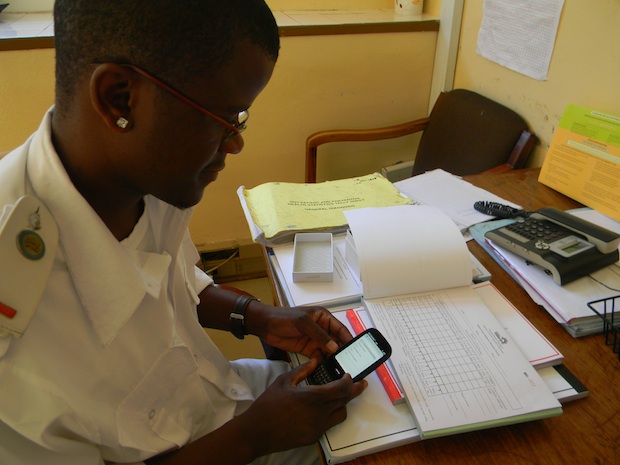
If officials in the developing world could track the development of a malaria outbreak in real time, they could quickly act to squelch the spread of the disease, monitor treatments, and make sure areas have adequate malaria nets.
HP's new partnership with Positive Innovation for the Next Generation (PING) will do just that, by equipping health-care workers in Botswana with HP Palm Pre 2 cell phones to gather malaria data via an app and upload the information to the cloud. Workers can also tag data with pictures, video, and audio. When it becomes clear that roving rural health-care workers have spotted enough individual malaria cases to signal an outbreak, Ministry of Health officials and other health workers in the area will be notified via text message.
It's a big upgrade from the current system, where reports filter in from health clinics "at a snail's pace," according to Paul Ellingstad, Director of Health Initiatives for HP's Office of Social Innovation. With the new system, "within hours when you have the beginning of an outbreak, health officials are alerted," he says.

Botswana is a near-perfect test site for the program--it's a stable democracy, and has a fairly stable economy with a cell phone penetration of 140% (meaning people have 1.4 cell phones on average).
The program has been running in pilot mode for the past three months, and it will continue for the next nine. So far, it has been working well.
"There is a lot of excitement and positive feedback from health-care workers," says Katy Digovich, PING's director of operations. Eventually, Digovich hopes that every health-care facility in the country will get at least one Palm Pre 2. Once the program expands, it may include reporting for other deadly diseases, including tuberculosis and Ebola. "We're hoping to add them one by one," says Digovich.
The partnership is limited to Botswana for now, but similar initiatives could work in other countries where cell phone penetration is high. "For all the talk of a global community, we increasingly see as we shift to
more use of mobile solutions and the cloud that some of the real areas of
innovation are places that people would find difficult to pinpoint on map," says Ellingstad.
[Image: PING]
Reach Ariel Schwartz via Twitter or email.


 Urban Chameleon is a kid chair, stroller, bike and more
Urban Chameleon is a kid chair, stroller, bike and more
by: The Design blog, 2011-06-01 09:42:39 UTC
Naresh:

Urban Stroller BikeUrban Stroller Bike is a kid chair, stroller and bike
Carrying young kids to market place or outdoors often becomes a challenging task for their parents. Addressing the issue for new parents, Italian designer Chiara Daniele has designed a multifunction concept that not just fulfills basic transportation needs, but also provides a place of safety to young kids within the four walls.
Picture Gallery
Urban Stroller Bike is a kid chair, stroller and bike
Hailed as Urban Chameleon, the concept comprises a shell made in ABS that comes ready with two kind of cushioning to accommodate the tots of different age group with ease. Featuring a flexible design, the shell turns from a relaxing cradle in to a seat that can adjust to three different supports to carry out different needs of transportation. For it can not be used just as a base for car and a stroller-bike, but a high chair for home use as well.
In addition, parents can stay closer to the Chamy and push it gently through crowded urban areas. Moreover, it becomes a shopping cart that the parents can use as a means of transportation for their day-to-day purchase in the downtown market.
Via: Behance


 Back to nature: A lavatory to connect you with nature
Back to nature: A lavatory to connect you with nature
by: The Design blog, 2011-06-06 11:26:47 UTC
Jaazhh:

public lavatories Concept - Back to natureThere are many jokes connected with lavatories. Perhaps its is easier for modern socialized people with numerous prejudices to rally this piquant subject than to discuss it seriously. In the project this natural process is also described humorously.
In an attempt to connect city dwellers with nature, Ekateryna Sokolova has come up with a public lavatory concept christened, ‘Back to Nature.’ People working in tall buildings hardly get any time to form a bond with their beautiful surroundings. The multisensory project will make a public lavatory more relaxing and private, while still making you feel in the lap of nature.
Picture Gallery
There are many jokes connected with lavatories. Perhaps its is easier for modern socialized people with numerous prejudices to rally this piquant subject than to discuss it seriously. In the project this natural process is also described humorously.
The functional and practical restroom will consist of artificial grass, which will be fitted on a perforated belt. The belt will be split into shorter segments measuring 50 cm each. When the grass gets dirty, a sensor detects this and washes the unclean section by inverting it. Back to Nature will club the voices and smell, which we experience while interacting with nature. When someone enters the lavatory, they will be greeted by a noise of chirping birds, sound of wind and soft tone of leaves. This will follow with the fragrance of fresh grass, grazing lands and forest areas.
Water running through faucets will be nothing but pure. It will be robotically disinfected and scented for a pleasant experience. The artificial grass finds a place in the urinals as well and is cleaned frequently. It is also proposed to envelop the walls with pictures from nature. Even the toilet paper will have figures from the natural world. This will heighten the whole experience of being surrounded by nature.
Back to nature with its unique qualities can be easily adjusted according to the size of a room. So, get ready to dive in a pure world and experience the aura of lavatories that come coated with the freshness of nature.
Via: Behance


 An Original System Lets You Design the Shelving You Want, No Tools Needed
An Original System Lets You Design the Shelving You Want, No Tools Needed
by: TreeHugger Design, 2011-06-06 17:35:20 UTC
 Images Courtesy of Philip Ganter
Images Courtesy of Philip Ganter
In homes where saving space is key, shelves have to accommodate everything from televisions and stereos to photos and the occasional wine rack. That means they need to be versatile, and German designer
Philip Ganter's HXWXD design is up to the challenge. It's a shelving system that you put together however you want, so it fits any space, and anything you can think to put on it....
Read the full story on TreeHugger
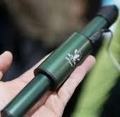




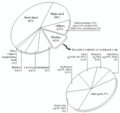




Comments by our Users
Be the first to write a comment for this item.